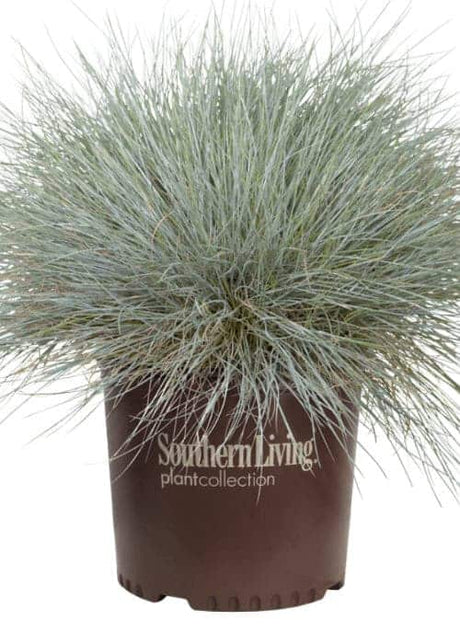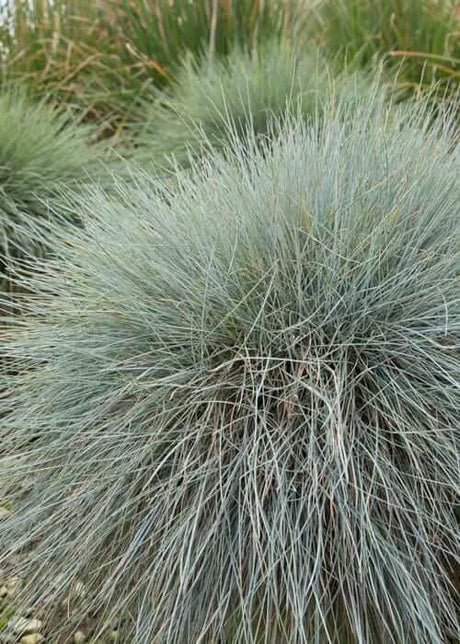FiltersFilter & Sort
- Sold out
Southern Living Plant Collection
Festuca glauca 'Beyond Blue' (Blue Fescue)
$19.99Unit price /Unavailable
Blue Fescue grass (Festuca glauca) is ornamental grass with silvery blue foliage and pale green flowers which slowly fade to a light brown or tan as they mature. They are drought tolerant and remain hardy in USDA zones 4-8.
With its wispy, fine texture and being easy to care for, gardeners have grown to love blue fescue grass. Unlike a number of other plants that are grown as ornamental grasses festuca glauca is a true perennial as it is classed under the Poaceae family.
Mature plants grow between 9-12 inches tall and approximately 18 inches wide when grown in ideal locations.






